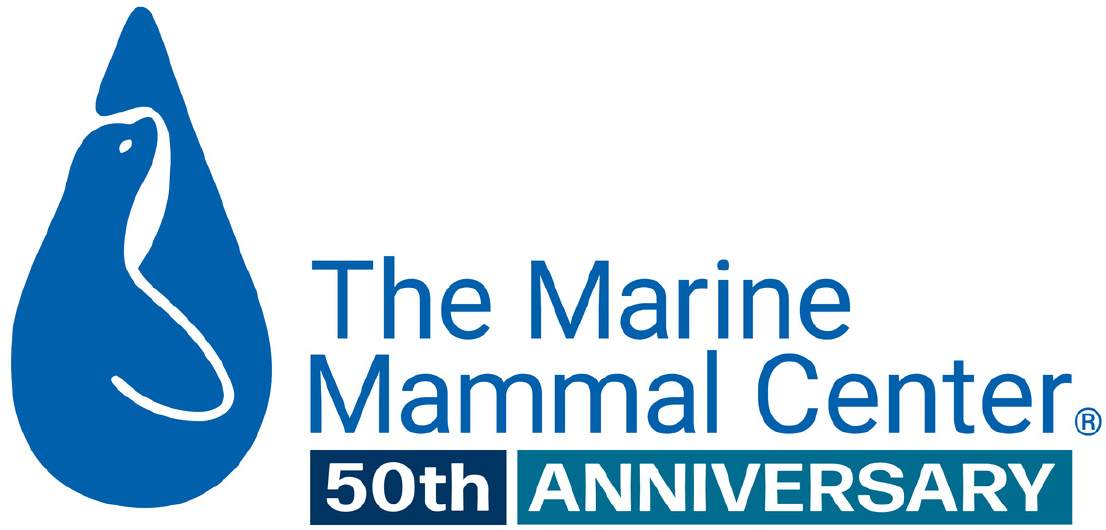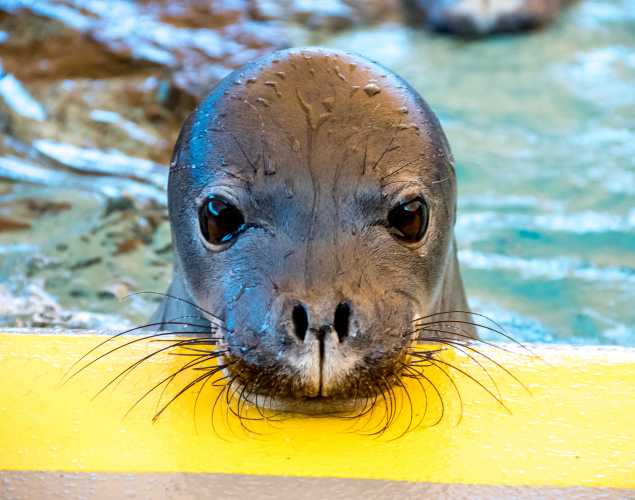
1% of Hawaiian Monk Seals Have Received Care at Ke Kai Ola
- Species conservation
In an effort to save Hawaiian monk seals from extinction, The Marine Mammal Center opened the first-ever rehabilitation facility devoted to this critically endangered species.
Just 15 months after first opening its doors to patients, our Ke Kai Ola hospital facility in Kona, Hawaii, has already admitted more than 1 percent of the total Hawaiian monk seal population, which is estimated at about 1,100 individuals.
“With eight monk seal patients already successfully rehabilitated and released, and seven more currently under our expert care at Ke Kai Ola, The Marine Mammal Center is playing an important role in restoring this critically endangered population to healthy numbers,” says Dr. Shawn Johnson, director of Veterinary Science at the Center.
Good News for a Population in Decline
A recent population survey led by researchers from the National Oceanic and Atmospheric Administration (NOAA) indicates that Hawaiian monk seals may already be making a small comeback, thanks to decades-long work in the region.
The researchers surveyed monk seal breeding sites in the Northwestern Hawaiian Islands, a 1,200-mile archipelago of small islands and atolls that is home to about 900 monk seals. They counted a total of 148 pups born there in 2015—a 22 percent increase from the number of pups born in the same area in 2014.
It’s exciting news, but doesn’t guarantee long-term success for the species because that population is in decline primarily due to poor juvenile survival. In fact, fewer than one in five Hawaiian monk seal pups in the Northwestern Hawaiian Islands survive their first year due to threats like entanglement in ocean trash, changes in the food chain and predation.
Every year, researchers monitor the Hawaiian monk seal population and intervene when necessary by disentangling seals from debris or moving them to areas of higher survival. Up to 30 percent of the entire population is alive today because of efforts like these by NOAA Fisheries and their partners, including The Marine Mammal Center.
But every year, some pups are separated from their mothers and weaned prematurely, leaving them in such poor condition that they are unlikely to survive on their own. Before we opened Ke Kai Ola’s doors, these emaciated pups were left on the beach with an uncertain future. Now these animals have a second chance at life.
Learn More About Hawaiian Monk Seals
Sign up to receive Hawaiian monk seal news, patient updates and more straight to your inbox.
{"image":"\/Animals\/Wild\/Hawaiian monk seal\/hawaiian-monk-seal-shutterstock.jpg","alt":"Hawaiian monk seal at the shoreline","label":"Pinnipeds","title":"Hawaiian Monk Seal","link_url":"\/animal-care\/learn-about-marine-mammals\/pinnipeds\/hawaiian-monk-seal","type":"page"}
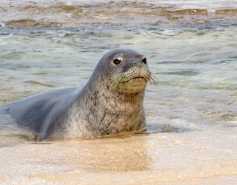
{"image":"\/Animals\/Wild\/Hawaiian monk seal\/cropped-images\/HMS-wild-NOAA-4-832-3197-1474-1603733454.jpg","alt":"Two Hawaiian monk seals sleeping on the beach.","label":"Conservation","title":"Hawaiian Monk Seal Conservation","link_url":"\/science-conservation\/conservation\/hawaiian-monk-seal-conservation","type":"page"}

{"image":"\/Animals\/Patients\/Hawaiian monk seals\/2015\/hms-pearl-by-julie-steelman-c-the-marine-mammal-center-noaa-permit-18786.jpg","alt":"Hawaiian monk seal Pearl","title":"Understanding Endangered","link_url":"https:\/\/www.marinemammalcenter.org\/publications\/understanding-endangered","label":"Online Learning Resource","type":"publication"}

{"image":"\/Animals\/Patients\/Hawaiian monk seals\/2016\/hms-nihoole-5-photo-c-noaa-permit-16632.jpg","alt":"Hawaiian monk seal Niho'ole","title":"Aloha \u02bb\u0100ina","link_url":"https:\/\/www.marinemammalcenter.org\/publications\/aloha-aina","label":"Online Learning Resource","type":"publication"}

Pearl and Hermes Go Home
The Center’s two most recent patients at Ke Kai Ola got that second chance at the end of September, when they were transported back to their home in the Northwestern Hawaiian Islands during the NOAA research trip that included the monk seal survey.
Named Pearl and Hermes for the atoll where they were rescued—and to which they returned—the pups spent about four months rehabilitating at Ke Kai Ola. Pearl and Hermes were underweight and malnourished when they were rescued in May, and much of their recovery involved teaching them how to eat fish on their own and helping them put on a healthy amount of weight to ensure their future survival.
About halfway through their rehabilitation, both seals were eagerly eating whole fish but our veterinary experts noticed that male pup Hermes was putting on three times as much weight as female pup Pearl. They saw that Pearl was taking longer to eat each fish, allowing Hermes to eat much of her fish in addition to his. Once the team began separating the two seal pups during feeds, Pearl was able to get the fish she needed to put on weight and grow stronger.
By mid-September Pearl and Hermes had been cleared for release back to the Northwestern Hawaiian Islands, and they began their journey aboard the NOAA research vessel Oscar Elton Sette. After about a week, the ship reached Pearl and Hermes Atoll and the two pups were transferred to a small pen on the beach to allow them to adjust to their surroundings.
On September 23, Pearl and Hermes were released from the beach pen and spent most of the day exploring a nearby lagoon. Both seals were fitted with satellite tags so researchers can continue to monitor their movements for the next several months. These tags will provide our scientists with valuable data that will help them better understand how to protect this critically endangered species.
New Pups Fill Ke Kai Ola's Pools
During their research trip in the Northwestern Hawaiian Islands, the NOAA team also rescued six young seals that were all underweight for their age and unlikely to survive on their own. These five female pups and one juvenile female were all transported back to Kona for rehabilitation. After being cared for at Ke Kai Ola, the seals will be returned to the Northwestern Hawaiian Islands.
"All of our research cruises have seals on them now—either seals headed to Kona for rehabilitation or headed back home fat, healthy and ready for their return to the wild,” says Dr. Charles Littnan, lead scientist of NOAA’s Hawaiian Monk Seal Research Program. “This hospital and our ship-turned-ambulance means new hope for monk seals."
The six seals joined another patient, Kilo, who was recently rescued on the privately owned island of Ni`ihau, southwest of Kauai. Kilo, a female pup whose name means “sassy,” is the first monk seal from the main Hawaiian Islands to be admitted to Ke Kai Ola. She was emaciated and dehydrated when she arrived at Ke Kai Ola and is the smallest of the seal pups rehabilitating there. But caregivers say she has lived up to her name by being very vocal, active and surprisingly strong given her emaciated condition.
Meet Our Current Patients
- Kilo, a pup whose Hawaiian name means “sassy”
- Ama`ama, a pup named for the island at French Frigate Shoals where she was born
- Puka, a pup whose Hawaiian name means “hole” because of a scar on her neck
- Neva, a pup named for Neva Shoals on Lisianski Island, where she was rescued
- `Ena`ena, a pup named for a small, silver plant native to Kure Atoll, where she was rescued
- Mahina, a pup whose Hawaiian name means “silver” because she was rescued during a “super moon”
- Mo`o, a one-year-old whose Hawaiian name means “dragon/shape-shifter”
Caring for Critically Endangered Patients
Once at Ke Kai Ola, every patient is weighed, measured and given a full physical examination by our veterinarians. Building on 40 years of experience caring for marine mammals at our California-based facility, our veterinary and animal husbandry experts make detailed treatment plans for each seal.
In the case of an emaciated and dehydrated seal pup like Kilo, that plan might include tube-feeding her electrolytes four to five times a day. Over time, the feedings will start to include a blended fish smoothie, and eventually the pup will be transitioned to eating fish whole as she would in the wild. Once the pup gains weight and gets stronger, the number of feedings per day will change as well.
Our veterinary staff and trained volunteers take special care to limit human interaction with these critically endangered patients as much as possible. Dark mesh screens cover the fencing around each pen and pool area, and caregivers monitor the seals from a distance via closed-circuit cameras.
Once the seals are able to eat on their own, fish will be thrown over the fence to disguise the source of food and mimic a wild ocean environment as much as possible. It’s all part of an effort to ensure that these young monk seals will one day be able to return to Hawaiian waters and have pups of their own.
“It is exciting and rewarding to be able to help these seven young female seals, and contribute to conservation of this endangered species in collaboration with our state and federal partners,” says Dr. Frances Gulland, Senior Scientist at The Marine Mammal Center.
More Than Medical Care
But our work to save this species doesn’t begin and end with providing expert veterinary care. We’re also bringing to the table our renowned educational programming and experience responding to more than 20,000 marine mammals over the last 40 years.
The Center’s education experts are working in collaboration with the Kohala Center, a community-based organization, on outreach efforts, including interpretive signage at Ke Kai Ola, to help educate the local community about the endangered monk seals and the need for conservation.
We also monitor Hawaiian monk seal haul out activity and manage rescue efforts for sick and injured seals on the beaches of West Hawaii near Kona. Our stranding response experts are coordinating local volunteers and training them to be able to assess and rescue marine mammals in distress.
If you spot a Hawaiian monk seal on the western beaches of the Big Island of Hawaii, you can now call our hotline to report the sighting at 808-987-0765.
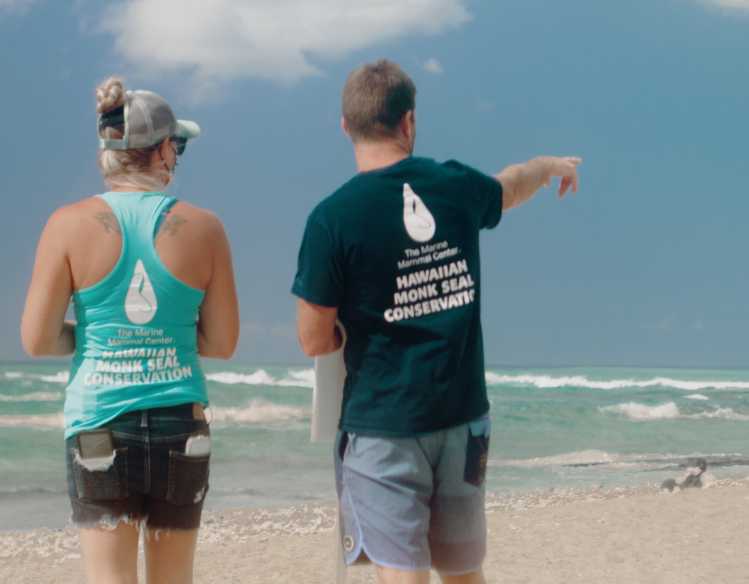
Volunteer With Us
None of our work is possible without the support of people like you. Volunteer roles are available in animal care and education on Hawai‘i Island, and in response on both Hawai‘i Island and Maui.
Yes, I want to save a life!
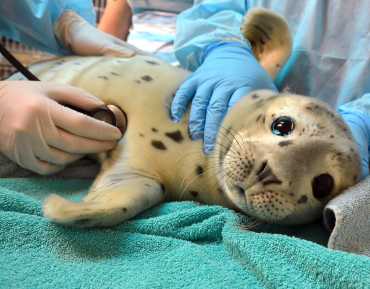
Yes, I want to save a life!
You’ll be giving sick and injured animals the best possible care at the Center’s state-of-the-art hospital. With your gift today, you are giving a patient a second chance at life in the wild.
See Our Latest News
{"image":"\/Animals\/Patients\/Hawaiian monk seals\/2025\/cropped-images\/d-ru28release-exam-at-ke-kai-ola111025photo-by-giancarlo-rulli-c-the-marine-mammal-center-noaa-permit-24359-0-0-1270-992-1764620886.jpg","alt":"","title":"Bird Flu Vaccine Trial Offers Hope for Protecting Hawaiian Monk Seals","link_url":"https:\/\/www.marinemammalcenter.org\/news\/bird-flu-vaccine-trial-may-offer-hope-for-protecting-hawaiian-monk-seals","label":"News Update","date":"2025-12-01 08:13:00"}

Bird Flu Vaccine Trial Offers Hope for Protecting Hawaiian Monk Seals
December 1, 2025
Read More{"image":"\/Animals\/Patients\/Hawaiian monk seals\/2021\/hms-pp08-by-sheila-latta-c-the-marine-mammal-center-noaa-permit-18786.jpg","alt":"Hawaiian monk seal","title":"The New York Times: Inside the Bird-Flu Vaccine Trial for Monk Seals","link_url":"https:\/\/www.marinemammalcenter.org\/news\/the-new-york-times-inside-the-bird-flu-vaccine-trial-for-monk-seals","label":"In the News","date":"2025-12-01 01:00:00"}

The New York Times: Inside the Bird-Flu Vaccine Trial for Monk Seals
December 1, 2025
Read More{"image":"\/Animals\/Wild\/Sea otter\/so-wild-morro-bayphoto-c-brian-simuro-20.jpeg","alt":"Sea otter and pup","title":"Watch a Sea Otter Pup Reunite With Its Mother","link_url":"https:\/\/www.marinemammalcenter.org\/news\/watch-sea-otter-pup-reunite-with-its-mother","label":"News Update","date":"2025-11-14 10:35:41"}

{"image":"\/Animals\/Wild\/Sea otter\/sea-otter-photo-c-brian-simuro.jpeg","alt":"Sea otter","title":"AP News: Baby sea otter is reunited with mother in central California after dramatic rescue","link_url":"https:\/\/www.marinemammalcenter.org\/news\/ap-news-baby-sea-otter-is-reunited-with-mother-in-central-california-after-dramatic-rescue","label":"In the News","date":"2025-11-14 09:46:34"}

AP News: Baby sea otter is reunited with mother in central California after dramatic rescue
November 14, 2025
Read More